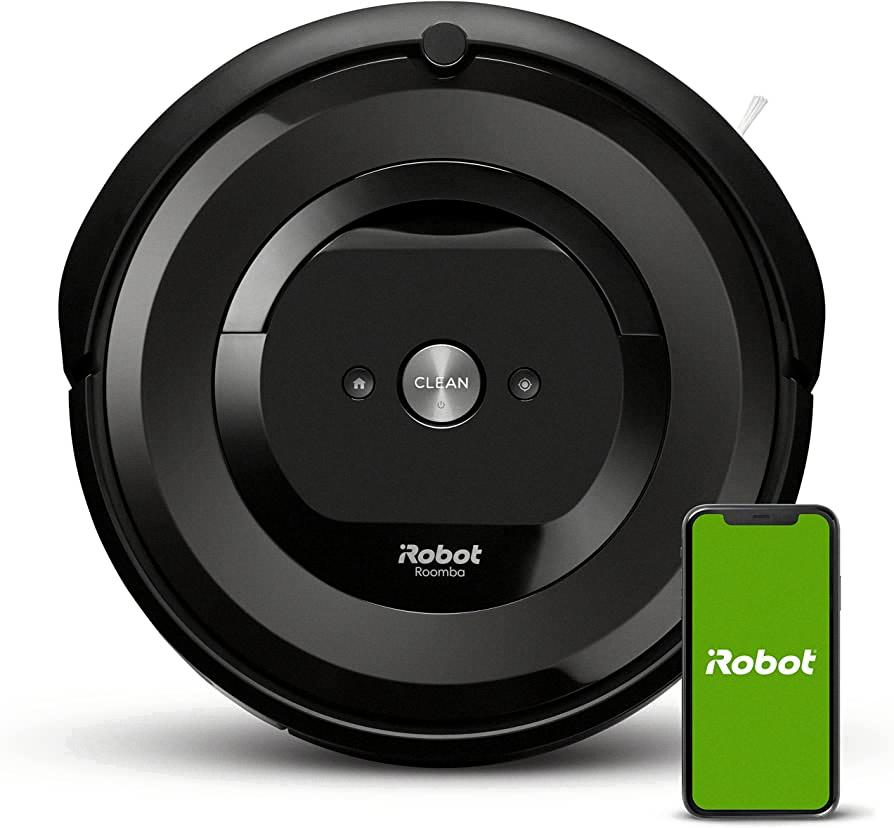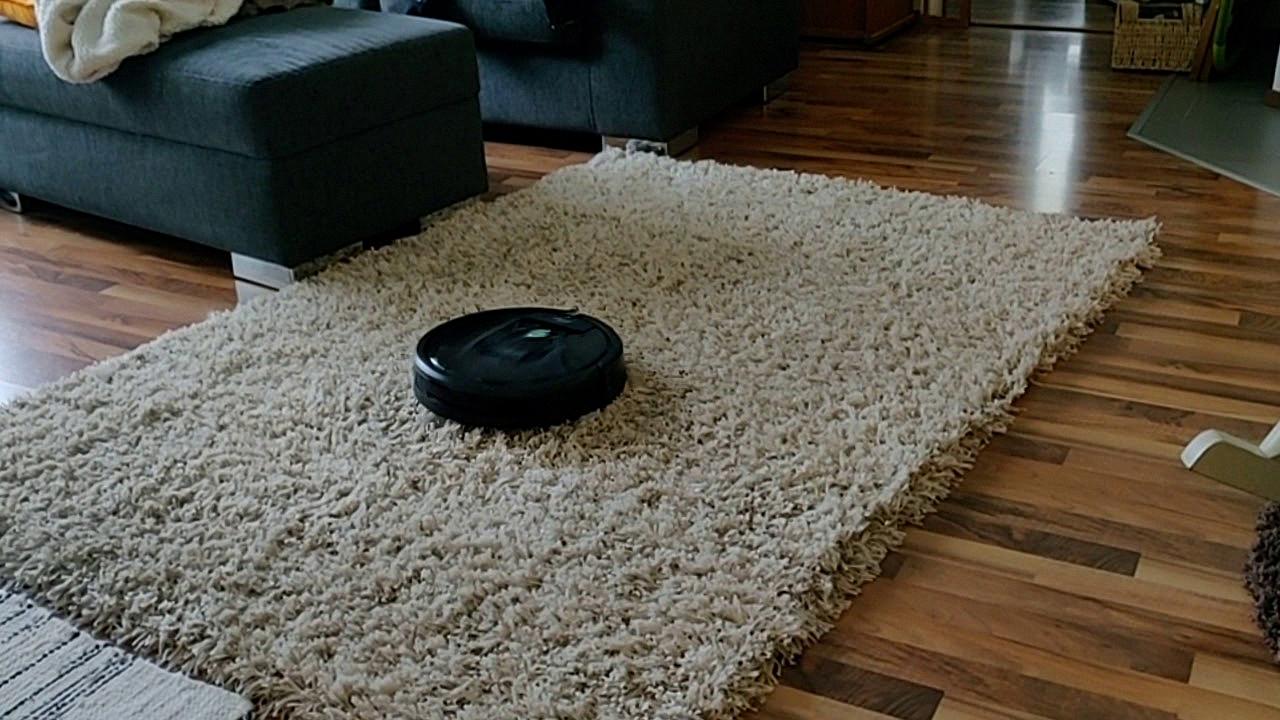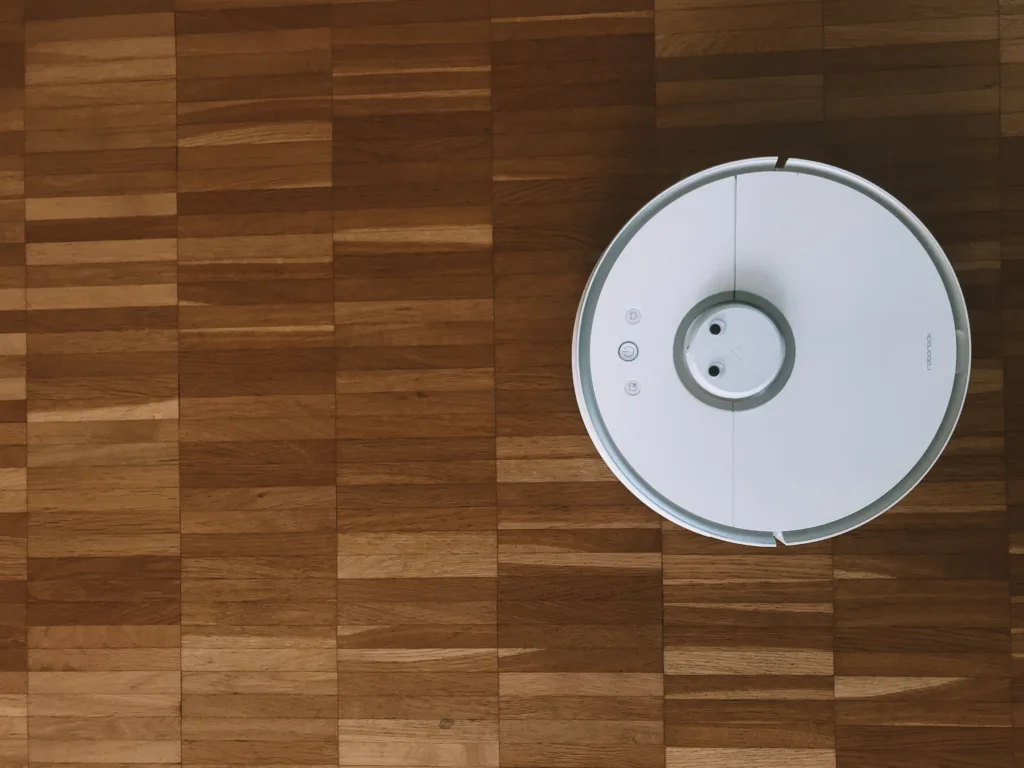Roombas are a popular choice for homeowners looking for a convenient and effective way to keep their floors clean. These robot vacuums are designed to handle everyday messes on a variety of surfaces, from hardwood to carpet. However, many people wnder whether Roombas are really effective on carpet, especially if they have thicker or high-pile rugs.
The answer is that it depends on the model of Roomba you have. While all Roombas are designed to clean carpets to some extent, some models are better suited for this task than others. If you have a lot of carpet in your home, it’s important to choose a Roomba with strong suction power and other features that will help it effectively clean your carpets.
One thing to keep in mind when using a Roomba on carpet is that it may not be as effective at picking up fine dust and pet hair that’s embedded deep in the fibers of your rugs. This is because robot vacuums are generally weaker than traditional vacuums, due to their smaller size and motor. However, many Roombas are still able to handle larger particles and surface-level dirt and debris on carpets.
If you have thicker or high-pile carpets, it’s important to choose a Roomba that’s specifically designed for this task. Look for models with powerful suction, dual turbines, or other features that will help the Roomba effectively navigate and clean these types of carpets. Some high-end Roombas also come with carpet boost technology, which automatically increases suction power when the robot vacuum detects that it’s on a carpeted surface.
Another thing to keep in mind when using a Roomba on carpet is that it may get stuck or tangled in the fibers of your rugs. To prevent this, you can cover the sensors on the bottom of your Roomba with small pieces of clear packing tape. This will help the Roomba navigate over area rugs without getting stuck.
Overall, Roombas are a great choice for homeowners looking for a convenient and effective way to keep their floors clean. While they may not be as powerful as traditional vacuums, many models are still able to effectively clean carpets of all types. By choosing a Roomba with strong suction power and other features that are specifically designed for carpet cleaning, you can ensure that your floors stay clean and tidy, no matter what type of surface they’re on.
Can Roombas Be Used on Carpet?
Yes, Roomba can be used on carpet. In fact, Roombas are designed to work on a variety of surfaces including hardwood, tile, and carpet. With its powerful suction and brushes, Roombas can effectively clean carpets by removing dirt, dust, and debris. However, it is important to note that not all Roomba models are created equal when it comes to cleaning carpets. Some models are specifically designed with advanced features such as high-efficiency filters, stronger suction, and tangle-free brushes that make them more effective in cleaning carpets. So, if you have carpets in your home and are conidering purchasing a Roomba, it’s important to research and choose a model that is specifically designed for carpet cleaning.

Source: amazon.com
Making Roomba Go on Carpet
If you’re having trouble getting your Roomba to clean your carpet, there’s a simple solution that can help. First, you’ll need a piece of plain white paper and some clear packing tape. Cover the paper on both sides with the tape, then cut it into four small pieces that will cover the sensors on the bottom of your Roomba.
Next, carefully place the pieces of tape over the sensors on the bottom of your Roomba. Make sure they are securely in place and covering the sensors completely. This will prevent the sensors from detecting the carpet as an obstacle and stopping the Roomba from cleaning.
Once the tape is in place, turn on your Roomba and let it do its thing. With the sensors covered, it shoud be able to navigate over area rugs and other low-pile carpets with ease.
It’s important to note that this solution may not work for high-pile or shag carpets, as the Roomba may still struggle to navigate over them. However, for most low-pile carpets and area rugs, covering the sensors with tape should do the trick and allow your Roomba to clean more effectively.
The Effectiveness of Robot Vacuums on Carpeted Surfaces
Robot vacuums can effectively clean carpets, but their performance may vary depending on the type of carpet and the specific model of the vacuum. Due to their small size, robot vacuums typically have smaller motors compared to traditional vacuums, which can limit their suction power. However, most robot vacuums have sufficient suction power to clean larger particles on carpet, such as dirt and debris. They can also pick up pet hair and oher small particles that may be on the surface of the carpet.
However, robot vacuums may struggle with deeply embedded dirt, dust, and pet hair that are trapped in dense carpets or rugs. This is because the suction power of robot vacuums is generally not strong enough to penetrate deeply into the fibers of the carpet. As a result, some finer particles may be left behind after cleaning.
It is also important to note that some robot vacuums may have difficulty navigating thick or shaggy carpets, as their wheels can get stuck or the brushes may not be able to effectively clean the fibers. Overall, while robot vacuums can be effective on carpet, it is important to choose a model that is specifically designed for carpet cleaning and to regularly maintain the vacuum to ensure optimal performance.
The Effectiveness of Roomba on Thick Carpet
When it comes to cleaning thick carpets, not all robot vacuums are created equal. However, higher-end Roombas are known for their ability to effectively clean high-pile carpets. Roombas that are specifically designed for this purpose typically have powerful suction that can extract dirt and debris from deep wihin the carpet fibers. These models may also feature dual turbines or other advanced technologies that help to improve performance on thicker carpets.
It’s worth noting that not all Roombas are created equal, so it’s important to choose a model that is specifically designed for cleaning thick carpets if this is a concern for you. Additionally, it’s important to keep in mind that even the most powerful robot vacuums may struggle to clean very thick or shaggy carpets. In these cases, it may be necessary to manually clean the carpet or use a traditional upright vacuum to supplement the robot’s cleaning efforts.
Disadvantages of the Roomba
While the Roomba has many advantages, there are also some notable disadvantages. One main disadvantage is that they don’t clean as thoroughly as other vacuum types. While they can pick up surface-level dirt and debris, they may struggle with deeper cleaning tasks such as removing embedded dirt or pet hair. Another disadvantage is that they can be fairly noisy, which may not be ideal for tose who are sensitive to sound. Additionally, they can be expensive compared to traditional vacuums, and may require regular maintenance and replacement of parts such as brushes and filters. Finally, they may not be as effective in larger homes or spaces with many obstacles, as they rely on sensors to navigate and can become confused or stuck.

Transitioning Roomba from Carpet to Floor
Yes, the Roomba can easily transition from carpet to floor without any assistance from you. The Roomba i3, like all Roomba models, is equipped with sensors that allow it to detect changes in flooring type and adjust its cleaning mode accordingly. When moving from carpet to hard surface flooring, the Roomba will adjust its suction power and brush speed to ensure that it effectively cleans the new surface without damaging it. This means that you can set your Roomba to clean your entire home without worrying abot it getting stuck or damaging your floors. Additionally, most Roomba models are able to navigate most throw rugs with no issue, making them a versatile cleaning tool for any home.
Can Roombas Navigate Fluffy Rugs?
Yes, Roomba can go over fluffy rugs withot any problem. In fact, modern Roombas are equipped with advanced sensors and technologies that enable them to clean different types of flooring, including shags and thick rugs. The robot vacuum’s sensors can detect the height of the carpet and adjust its suction power accordingly to clean effectively. Additionally, Roombas are designed with large wheels that can easily navigate over uneven surfaces, such as plush carpets and rugs. However, it is recommended to keep an eye on the vacuum’s cleaning performance on fluffy rugs, as it may require more frequent cleaning to prevent clogging of the brushroll or filter. Overall, Roombas are great at cleaning a variety of surfaces, including fluffy rugs, making them a versatile and efficient cleaning tool for any home.
Does Roomba Become Familiar with Your Home Over Time?
Yes, Roomba can learn your house as it cleans. Through a process called Imprint™ Smart Mapping, Roomba uses its sensors and cameras to create a map of your home and the objects within it. This map is then used to guide Roomba through subsequent cleaning missions, allowing it to clean more efficiently and effectively.
It typically takes Roomba thee to five cleaning missions to generate a fully developed Imprint™ Smart Map, which can then be customized and used to create cleaning schedules, virtual boundaries, and other settings. As Roomba continues to clean your home, it will update and refine its map, learning the layout of your home and adapting to any changes or obstacles that may arise.
Overall, Roomba’s ability to learn your home and create a customized cleaning plan can save you time and effort, while also ensuring that your floors stay clean and tidy.
Troubleshooting a Roomba That Does Not Complete a Room
There could be various reasons why your Roomba is not finishing a room. Firstly, the Roomba may not have eough light to navigate the room. It uses sensors to detect obstacles and plan its route, and if the room is too dark, it may not be able to do so effectively. Therefore, ensure that there is adequate lighting in the room.
Secondly, if there are a lot of objects on the floor, the Roomba may not be able to navigate around them, causing it to get stuck or stop cleaning. To solve this issue, clear the floor of any clutter or objects that may obstruct the Roomba’s path.
Thirdly, malfunctioning wheels can also cause the Roomba to stop cleaning mid-way. If the wheels are not moving correctly or are clogged with debris, the Roomba may not be able to navigate around the room effectively. Check the wheels for any debris or damage and clean or replace them as necessary.
Lastly, a dirty sensor can also cause the Roomba to malfunction. The Roomba uses sensors to detect dirt and debris on the floor, and if the sensors are dirty or covered in debris, the Roomba will not be able to detect any dirt, causing it to stop cleaning. Clean the sensors regularly to ensure that they are working correctly.
In conclusion, if your Roomba is not finishing a room, it could be due to a lack of light, a cluttered floor, malfunctioning wheels, or a dirty sensor. By following these steps to fix the issue, you can ensure that your Roomba cleans your home efficiently and effectively.

Source: youtube.com
The Impact of Robot Vacuums on Carpeted Floors
Robot vacuums are generally safe for carpets, and shold not cause any damage or wear and tear if used properly. However, their effectiveness can be limited based on the type and thickness of the carpet. While they may perform well on low or medium-pile carpets, thicker carpets may pose a challenge as the vacuum may struggle to pick up debris. Additionally, robot vacuums may not be able to provide the deep cleaning that is necessary to remove embedded dirt and stains from carpets. As a result, it may be necessary to supplement robot vacuuming with regular deep cleaning using an upright or canister vacuum. Overall, while robot vacuums can be a convenient tool for maintaining carpets, they may not be a complete substitute for traditional vacuuming methods.
The Pros and Cons of Robot Vacuums
Robot vacuums have gained popularity in recent years due to their convenience and time-saving benefits. However, like any other appliance, they have their advantages and disadvantages. Let’s take a closer look at the pros and cons of robot vacuums.
Pros:
1. Convenience: Robot vacuums are convenient to use as they require minimal human intervention. You can simply set up the vacuum, and it will clean your home automatically.
2. Time-saving: Robot vacuums save time as they can clean your home while you are away. You can come back to a clean home without having to spend time vacuuming.
3. Efficiency: Robot vacuums are efficient as they can clean uder furniture and reach tight spaces that are difficult to clean with a traditional vacuum cleaner.
4. Low noise: Robot vacuums are quieter than traditional vacuum cleaners, making them ideal for use at night or in shared spaces.
5. Programmable: Robot vacuums can be programmed to clean at specific times or frequencies, making them ideal for busy households.
Cons:
1. Expensive: Robot vacuums are more expensive than traditional vacuum cleaners, and the price varies depending on the brand and features.
2. Limited battery life: Robot vacuums have limited battery life and may need to be recharged frequently, which can affect their cleaning efficiency.
3. Limited cleaning ability: Robot vacuums perform best on hard floors and may not be as effective on soft floors and carpets.
4. Maintenance: Robot vacuums require regular maintenance, such as emptying the dust bin and cleaning the brushes, which can be time-consuming.
5. Limited suction power: Robot vacuums have limited suction power compared to traditional vacuum cleaners, which may affect their ability to clean thoroughly.
In conclusion, robot vacuums have their advantages and disadvantages. They are convenient, time-saving, efficient, low noise, and programmable. However, they are expensive, have limited battery life and cleaning ability, require maintenance, and have limited suction power. It is essential to weigh these factors before deciding whether a robot vacuum is right for you.
Vacuuming Thick Carpet
Vacuuming thick carpet requires a bit of extra attention and effort to ensure that the carpet is properly cleaned without damaging the fibers. The first step is to adjust the height of your vacuum cleaner. Many upright vacuums have a height adjustment feature that allows you to raise or lower the brush roll to accommodate dfferent carpet heights. For thick carpet, it’s important to raise the brush roll to its highest setting to allow for proper airflow and suction.
Before you begin vacuuming, it’s also a good idea to remove any large debris or loose dirt from the carpet by using a broom or dustpan. This will prevent the vacuum from getting clogged or bogged down by larger particles.
When you’re ready to start vacuuming, begin by slowly pushing the vacuum forward in a straight line, being careful not to press down too hard on the carpet. Then, pull the vacuum back towards you, again in a straight line, applying gentle pressure to ensure that the brush roll is making contact with the carpet fibers.
For optimal cleaning, it’s recommended to vacuum in overlapping rows, making sure to cover the entire area of the carpet. You may need to make multiple passes over heavily soiled areas or areas with high traffic.
Once you’ve finished vacuuming, take a moment to check the brush roll and remove any hair or debris that may have become tangled around it. This will help to maintain the efficiency and lifespan of your vacuum cleaner.
In summary, to properly vacuum thick carpet, adjust the height of your vacuum, remove any large debris beforehand, vacuum in straight lines with gentle pressure, overlap your rows, and check and clean your brush roll after use.

Conclusion
In conclusion, Roombas are a great investment for anyoe looking for an efficient and effortless way to clean their home on a daily basis. These robot vacuums are designed to handle a wide range of surfaces, including hardwood floors, carpets, and area rugs. While they may not have the same suction power as traditional vacuums, they are still highly effective at picking up larger particles and debris. When it comes to carpet cleaning, it’s important to choose a Roomba model that is specifically designed for thicker carpets and has powerful suction capabilities. By taking these factors into consideration, you can ensure that your Roomba will provide optimal cleaning results and make your life easier in the process. Overall, Roombas are a reliable and convenient solution for keeping your home clean and tidy.
